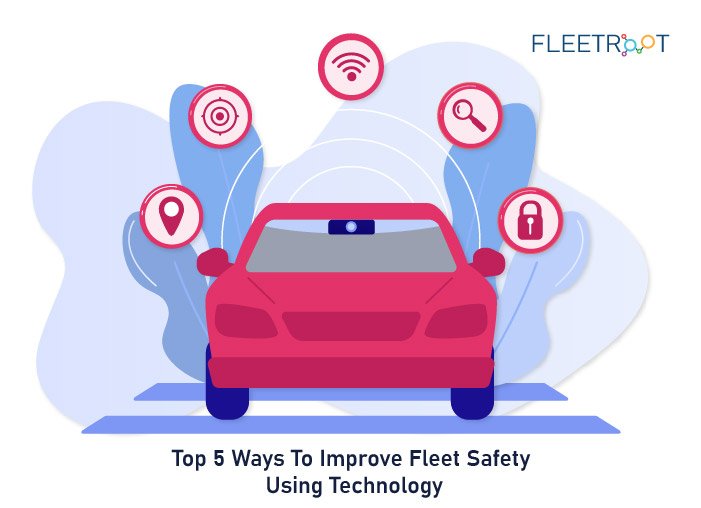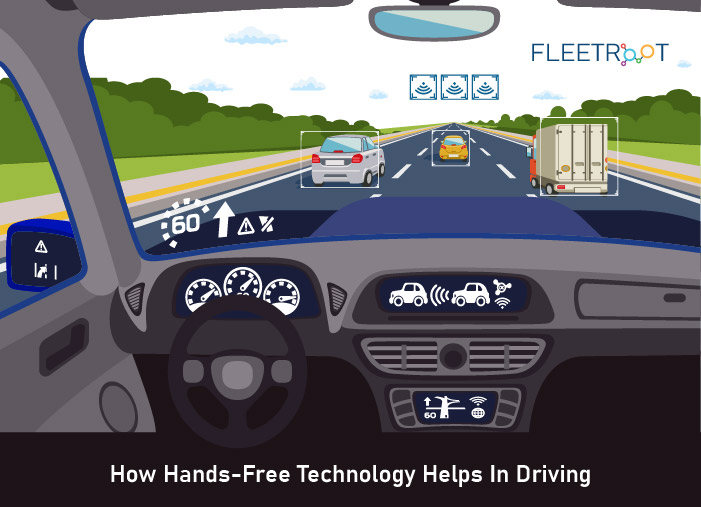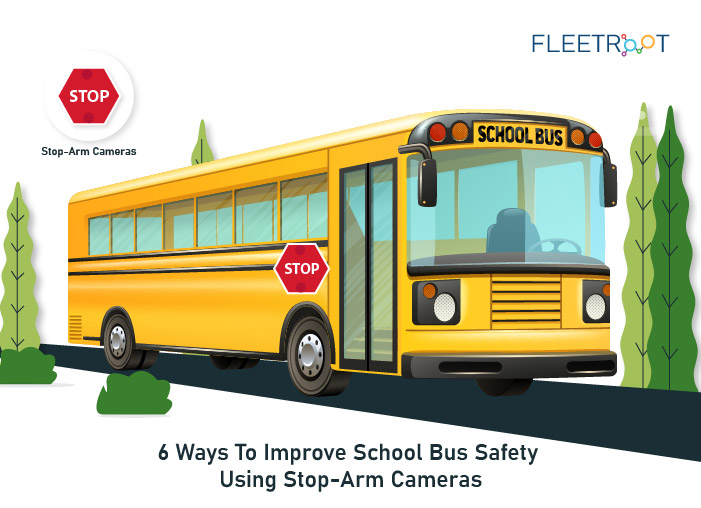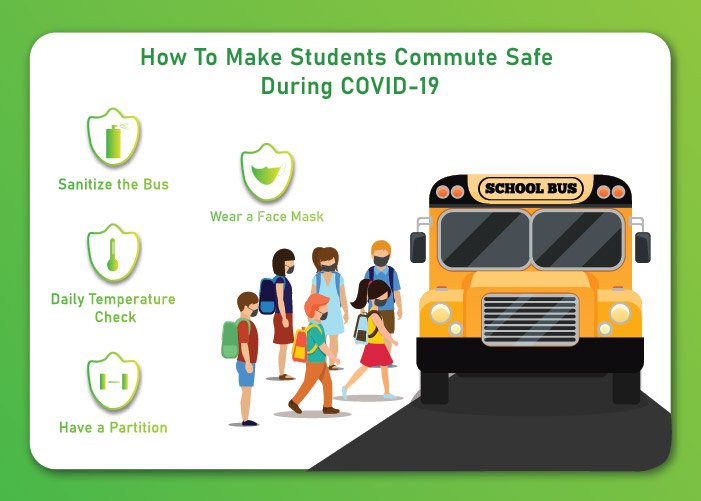Multiple technologies have been developed to make a safe fleet and one among them is the school bus tracking system. The advancement of technology has not stopped and with it will come new features to help passengers stay safe on the road.
With the growth in high-tech, manufacturers are introducing new vehicle control features to save fuel, enhance security and comfort, and above all make vehicles much safer to drive.
Here is how technology can make driving safer
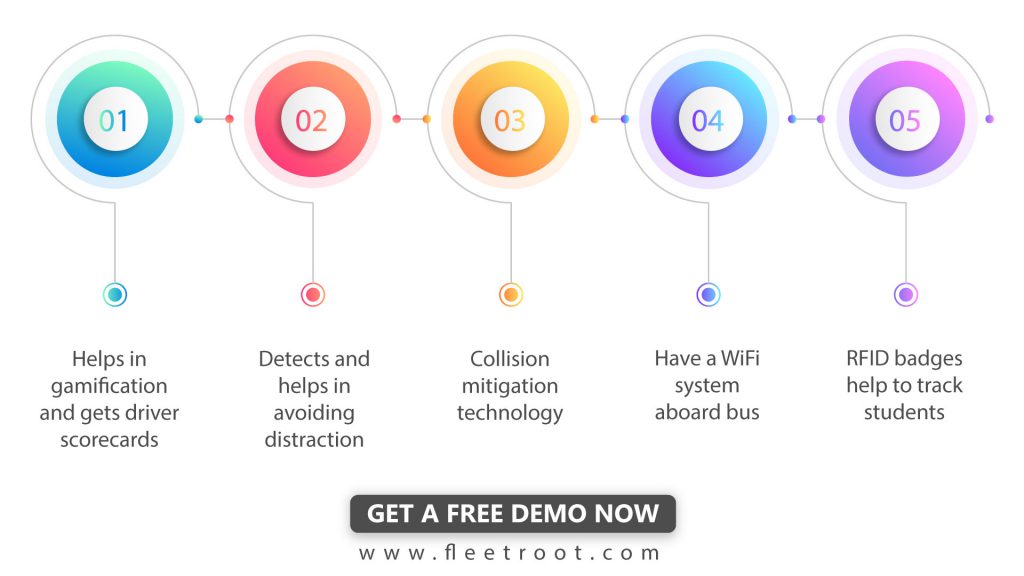
1. Helps in gamification and gets driver scorecards
Drivers are the primary agents responsible for the safety on the bus. Irrespective of the components of your bus, one of the largest variables at play is the driver. Every technology will be at a loss if he isn’t trained enough for the task.
However, sometimes, training alone is not sufficient. Healthy competition can be an interesting way to bring the best out of the drivers on the table.
Gamification not only makes things interesting for the drivers but also helps in boosting their confidence, which ultimately reflects in their driving and thereby, augments the safety aspects.
An advanced fleet tracking software comes with an in-built camera and scorecard. The camera records every movement of the driver and compares them against the set parameter to score them.
As a result, this eliminates manual supervision and automates driver scoring and coaching rather than piling it on the manager while also taking a faster, fairer and a more holistic approach.
2. Detects and helps in avoiding distraction
Whether you like it or not distraction among drivers is a reality and more often than not, this is the reason behind an accident.
Critics argue that technology — mobile phones, WiFi, music, usage of hands-free — are the major causes of distraction, but in an ironic twist, the very thing that caused the problem may be the ultimate solution.
Advanced mobile phones come with an application that lets your phone provider know you are driving. The wireless provider blocks all emails, texts, and social networking updates and prevents you from sending messages and posting on social media while driving.
This can be used to keep the drivers away from their phones. Some apps send a notification to the other person trying to contact the driver, saying that he would reach out after he is off the road.
This not only keeps their hands on the wheels but also helps in maintaining their focus on the road. When they know that their contacts are being taken care of and are informed that they would reach out again, the drivers are not distracted about missing out on information.
Apart from this, fleet monitoring software also allows you to identify when the driver is sleepy, distracted or is driving rashly.
The occupant-sensing technology uses verticals like facial recognition, eye movement, and gesture control to monitor the distraction and drowsiness levels of the driver.
In modern vehicles, infrared cameras are in-built and are placed near the steering wheel or rear view mirror. These cameras automatically track the drivers’ head position to ensure that they are focused on the road.
With facial recognition technology, the facial features of the person on the driving seat can be compared with the footage stored in the database. You wouldn’t want a third-party person or a stranger around the children. It not only puts them at the mercy of probably an untrained driver but also raises concerns about their safety and well-being.
The integration of a hand gesture friendly technology can also be helpful. As a result, the driver can control features like music, incoming call, stereo volume, just by waving their hand.
However, for gestures to work, the feedback needs to be instant as additional time difference adds to the distraction.
3. Collision mitigation technology
If not distractions, then speeding is what the drivers are most commonly guilty of. This is not only an incorrect driving practice but dangerous too that can leave you open to legal liability.
Hence, invest in software that allows you to incorporate collision mitigation technology into your system.
These systems incorporate sensors that helps in predicting and monitoring crashes of various kinds and the emergency measures that can be kicked-in to prevent any mishap.
Most vehicles these days have Automatic Emergency Braking that applies brakes automatically when a forward collision is imminent.
There is also a Forward Collision Warning that alerts the driver about a potential crash. The Lane-Departure Warning alerts them when the vehicle crosses lane markings without using a turn signal.
Systems like Pedestrian Automatic Emergency Braking detects passerby on the road and warns the drivers, breaks automatically if the collision is imminent.
There is also an option to set a speed limit on the fleet to be sure of the fact that the driver doesn’t indulge in good driving practices or rash driving.
With a fleet monitoring software, the school management can get data about the number of times that the driver got stuck in the dangerous places and the motion sensors had to help him out.
In-built camera and real-time recording lets you know what exactly happened at a particular time, even though you were not physically present. This can be a good training material as you can exactly map the instances when the driver is going wrong
Research also suggests that the sensor warnings and the telematics data derived out of them can train drivers to avoid getting into unfortunate instances.
Fewer collisions not only puts the children away from risk but also improves the life-span of the fleet. A decrease in sharp braking and rapid acceleration helps in saving fuel and lessens wear and tear on tyres, thereby resulting in proper maintenance of the vehicle
4. Have a WiFi system aboard bus
A WiFi router is the first step for creating a well-connected, interactive bus. Enabling WiFi aboard a school bus makes it easier for the management to track the bus.
A WiFi-friendly fleet, when integrated with GPS technology, can aid the drivers to find the right routes, help in dynamic routing and save time and fuel.
The internet connection can also be used to inform the parents about the location of the children. It also keeps them in the loop on when is the pickup time, how many students are yet to board the bus and if the vehicle is stuck in traffic.
With WiFi onboard, it is easier to keep the kids engaged as it turns downtime on the bus into uptime. They can either have fun-learning exercises or can listen to motivational speeches on their way.
This ensures that the children are seated and are not moving or pushing each other when the bus is already in motion
5. RFID badges help to track students
Just like schools have ID badges for proper identification and safety of the children in their premises, many buses have now started RFID (Radio-Frequency Identification) chips to monitor the ward at all times.
RFID chips are tiny radio receivers or transmitters that are fitted in the ID cards to allow the tracking of the students.
When the chip within range of a radio-based reader tuned to the right frequency, it identifies itself and is registered as having passed that zone.
In daily school commute, the chip in integrated with the regular school ID card. When the student boards the bus, the RFID chip catches the signal emitted by the reader and registers it on its database.
When the child gets down from the bus, it is again recorded with the reader. The same process is followed when the child reaches the school campus.
When fitted with the GPRS-GPS sim card reader, the radio chip sends an alert to the parents when the child boards the bus, gets off and reaches the classroom.
With RFID chips, the parents can keep track of their child’s whereabouts without physically being present with him all the time. They also receive an alert when the ward has reached the school premises safely.
Better attendance tracking is beneficial for school as well, as they can easily identify who has skipped the bus journey and can follow-up the case with the parents.
RFID chips are also helpful in cases of emergency, where it is easy to locate the child using the radio frequency, instead of making announcements.
An advanced fleet tracker also comes with a two-factor authenticator that adds an additional layer of security.
Conclusion:
With a fleet tracking system, you don’t have to worry about investing multiple times for the above-mentioned technological advancements. Most software come with many more benefits that you can avail.
If the safety of the children, improved drivers performance and easy monitoring are your key concerns, a good-quality school bus tracking software is a one-stop solution to all your needs.
Just analyze your needs with the budget at hand, have a glance at the upcoming technological trends and ask yourself, is it your time to invest in a school bus tracker?
